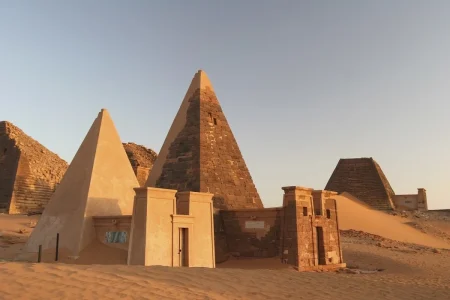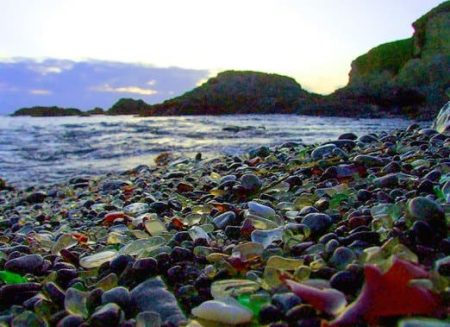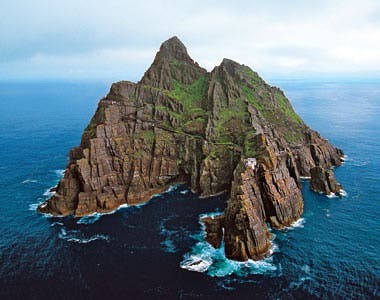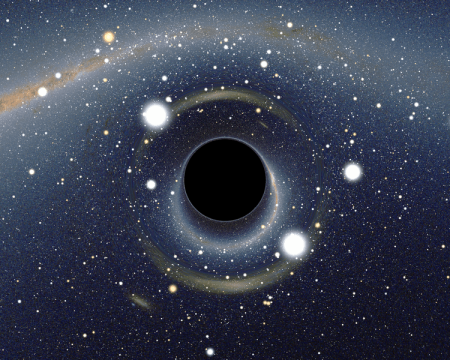We are but a rock floating through the vastness of space. There are other rocks floating with us; some smaller, some bigger. Sometimes, some of these rocks smash into our rock. We know, for instance, that an asteroid wiped off the dinosaurs and caused one of the largest extinctions in our planet's history. But that's far from the only big crater caused by an impact.
Asteroids that hit the Earth
Before we dive into some of the most impressive craters you (probably) don't know about, let's make a distinction.
- Asteroids are small rocky objects in our solar system that orbit the Sun.
- A small piece that breaks from an asteroid is called a meteoroid.
- A meteor is what happens when a meteoroid burns up upon entering Earth's atmosphere.
- A meteorite is a solid piece of debris from an asteroid (or comet) that survives its passage through the atmosphere to reach the surface of the planet.
The identification of asteroid impact sites, also known as astroblemes, often involves detective work of an astronomical caliber. Distinctive geological features (circular lakes, rings of shattered rocks, or patterns of magnetic anomalies) hint at an extraterrestrial origin. Geochemical clues (the presence of rare elements or minerals formed under extreme pressure) can provide further evidence of a cosmic collision. Sometimes, researchers discover impact craters almost by mistake, as is the case with the Chicxulub crater. Speaking of, the Chicxulub crater that wiped off the dinosaurs is not on this list as it's not visible on the surface.
There are hundreds of notable asteroid impact sites on Earth. Some of them are visible on the surface. Some of them are completely eroded or covered by geological processes. Here, we've selected some of the most striking ones that are visible on the surface. Pay attention to the very last one — you won't believe it's real.
They are in no particular order, and sometimes, snapping pictures that capture the crater is difficult. Sometimes there are aerial photos, sometimes there are radar images, other times we've got something from satellites. Let's journey through some of these captivating asteroid impact sites. We'll see where the Earth still bears the scars of its encounters with these celestial visitors.
Lake El´gygytgyn crater
Siberia, Russian Federation
Diameter: 18 km
Age: 3.5 million years
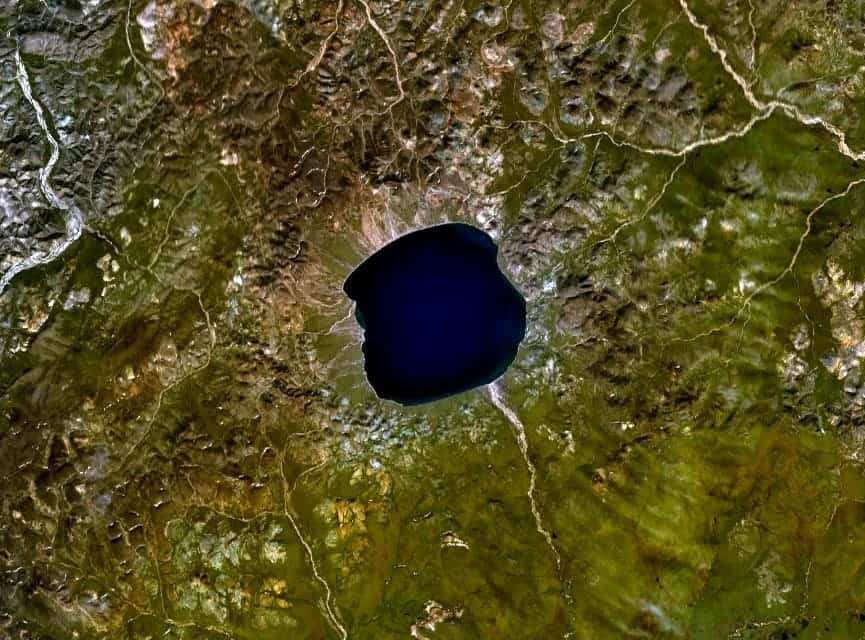
Looking at asteroid movies, you'd think big asteroid impacts are super rare. But in geologic time, they happen quite a lot. If you think about it, 3.5 million years is the blink of an eye in geological time — humans were already evolving.
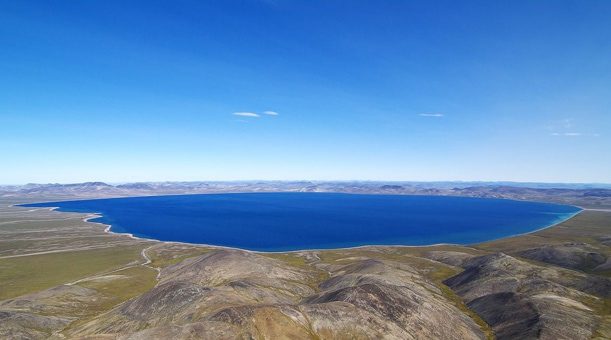
Situated in the vast, icy expanse of Siberia, Russia, is Lake El'gygytgyn. El'gygytgyn is a crater lake occupying an impact basin formed about 3.6 million years ago. The asteroid that slammed into the Earth to create this 18-km diameter crater was likely 1 km across. It unleashed an energy equivalent to multiple nuclear bombs. The word "Elgygytgyn" means "white lake" in the Chukchi language, the language of the population in that part of Siberia.
Pingualuit crater
Nunavik, northern Quebec, Canada.
Diameter: 3.44 km
Age: 1.4 million years
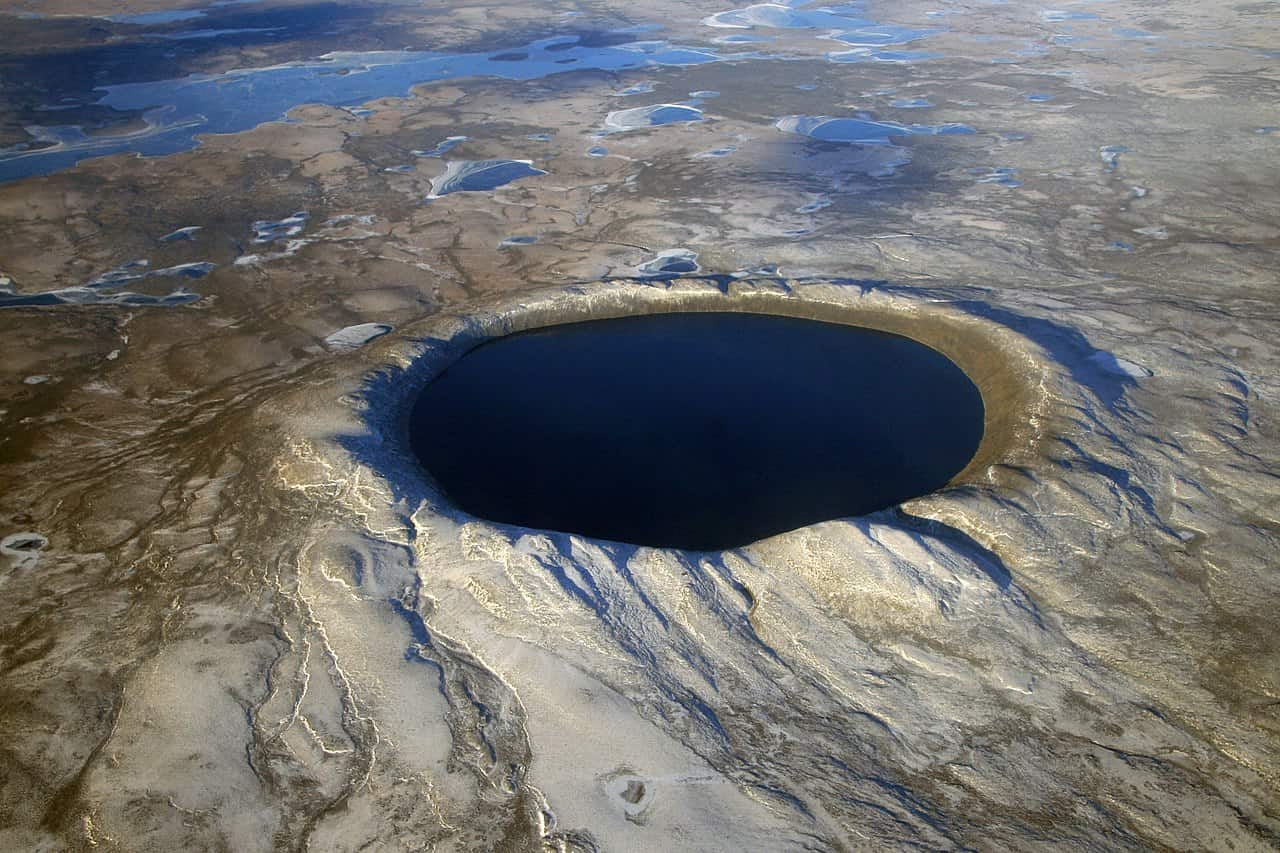
Nestled in the stark tundra landscape of Northern Quebec, Canada, is the Pingualuit Crater. Spanning 1.4 km in diameter, this near-circular crater houses a deep, clear lake, often called the "Crystal Eye of the North". The site's pristine condition, largely unaffected by erosion, helps to reveal the destructive power of the meteorite impact, which occurred roughly 1.4 million years ago.
The lake that formed in the crater is also remarkable. The crater is 400 meters deep, and the lake covers some 267 meters of those. It's got some of the purest fresh water in the world, with 150 times less salt than the Great Lakes, for instance. It's also one of the most transparent waters in the world. The water accumulates solely from rain and snow and is lost through evaporation.
Clearwater West (one of two different craters)
Quebec, Canada
Original diameter: 36km
Age: 290 million years
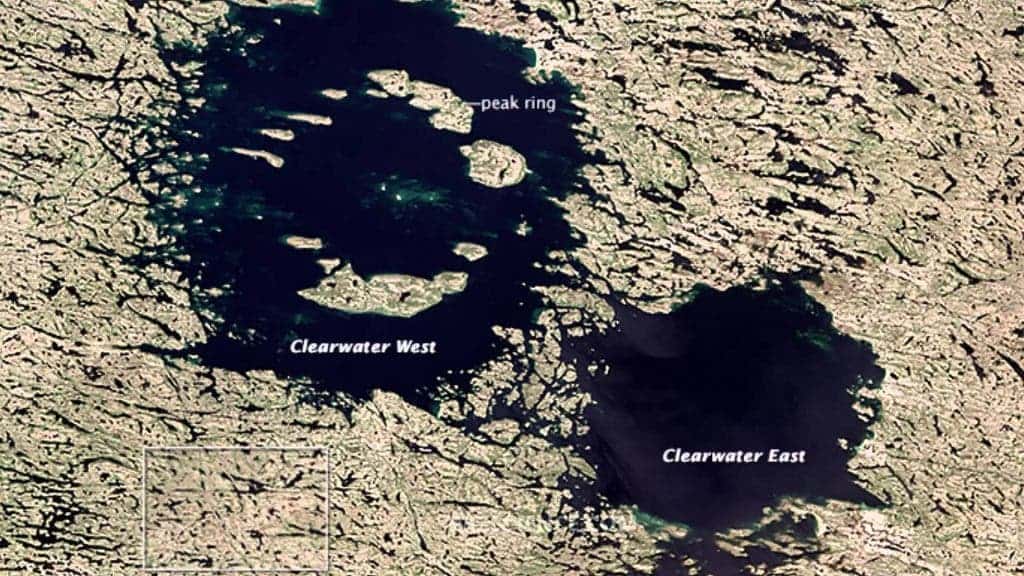
In Quebec, Canada, another testament to Earth's extraterrestrial interactions unfolds—the Clearwater Lakes. This unique site features two impact craters, suggesting a rare, simultaneous impact by a binary asteroid—an asteroid pair orbiting each other. The eastern lake spans 36 km, while the western one reaches 26 km in diameter. The varying degrees of erosion suggests the eastern lake is slightly older, challenging the binary asteroid theory yet intriguing researchers with its mystery.
The impact craters are so big they have their own microclimate, as is visible in the ecosystems developed in and around the lake. No doubt, when asteroids hit Earth, they can have a massive impact. This is an ancient crater, so it's remarkable that it's still so visible on the surface — a testament to the rather calm geology of Canada.
Manicouagan crater
Quebec, Canada
Diameter: 85 km
Age: 214 million years
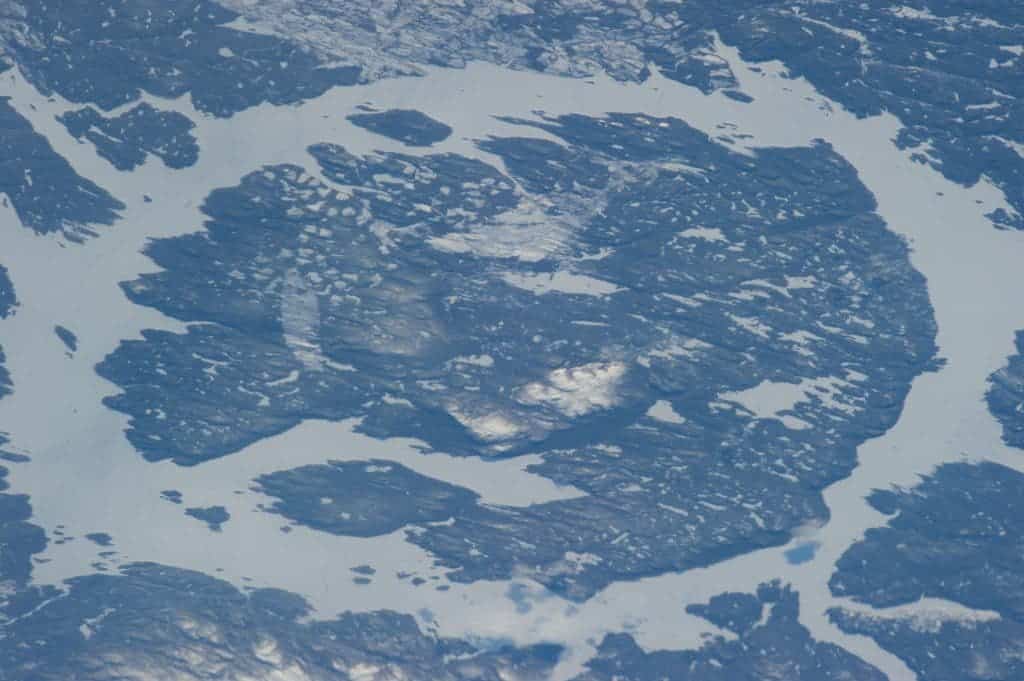
Remember how we said Canada has relatively calm geology? That helps preserve the structure of asteroid impact sites, which is why nowadays, we see so many asteroid craters in Canada. It's not that asteroids smacked this continent specifically, but rather that the ones they did are well preserved.
Not too far from the Clearwater Lakes is another Canadian marvel—the Manicouagan Crater. Known as the "Eye of Quebec", this annular lake presents one of the largest and best-preserved impact craters on Earth, spanning a massive 70 km in diameter. Formed about 214 million years ago, this crater now serves as a grim yet fascinating testament to the cataclysmic power asteroids can wield.
Upheaval Dome
Canyonlands National Park, Utah, US
Diameter: 10 km
Age: 170 million years
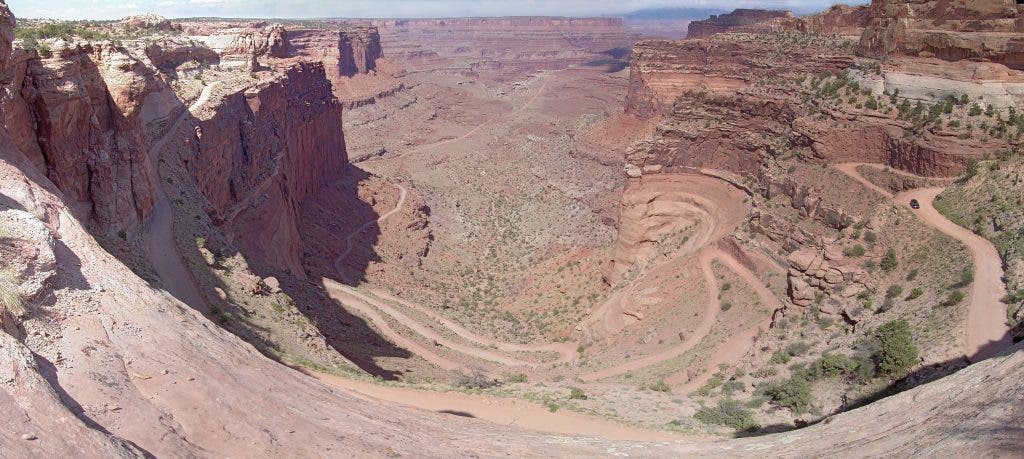
At the heart of the breathtaking desert landscape of Utah, USA, is the Canyonlands National Park. This area is known for its dramatic sandstone landscapes carved by the Colorado River. However, beneath the layers of sediment lies a possible impact structure. While its size remains uncertain due to erosion and sedimentation, scientists believe that this hidden scar could be evidence of an ancient asteroid impact.
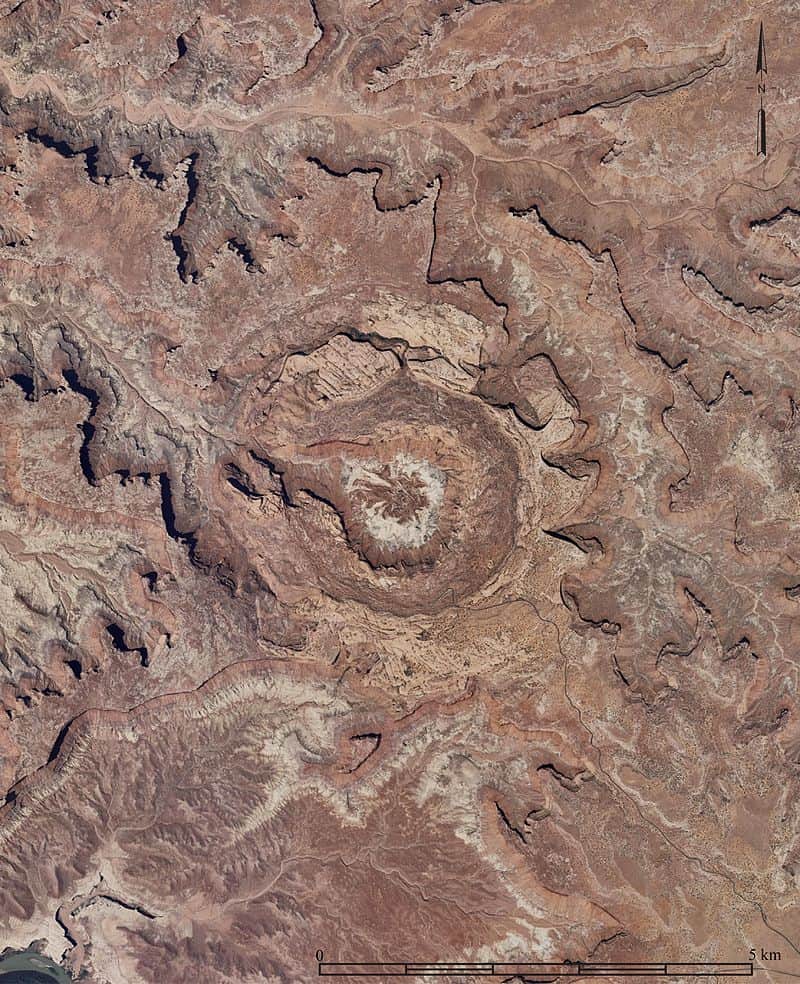
There's still some debate regarding whether this is actually an asteroid impact crater (that's what happens when erosion kicks in, it makes it more difficult to figure out what's going on). Other hypotheses suggested that it could be a salt dome or an anticline, a specific geological structure. But the evidence is leaning towards a crater. In the 1990s, a team of geologists and seismologists from NASA and the University of Nevada at Reno mapped the structure and the rocks. Their results supported an impact crater. In 2008, researchers also found shocked quartz, a sign of a major impact. However, the origin remains unresolved and not everyone is convinced this is really a crater.
Bosumtwi crater
Ghana
Diameter: 10.5 km
Age: 1.07 million years
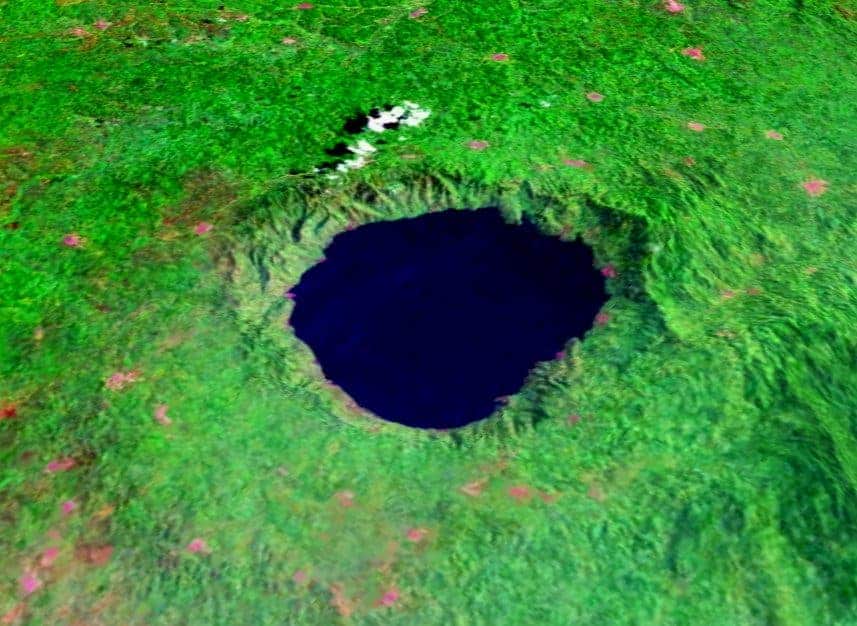
Tucked away within the verdant landscapes of Ghana is Lake Bosumtwi. Lake Bosumtwi is the only natural lake in Ghana and formed in a meteorite impact crater.The Bosumtwi crater was formed around 1.1 million years ago, leaving a lasting imprint that shapes the landscape and livelihoods around it today.
The lake, spanning 10.5 km, is revered as sacred by the local Ashanti people, adding a layer of cultural significance to its geological history. According to traditional belief, the souls of the dead come here to bid farewell to the goddess Asase Ya. Because of this, it is considered permissible to fish in the lake only from wooden planks.
Aorounga and Gweni Fada craters
Chad
Diameter: 17 km / 14 km
Age: 345 million years
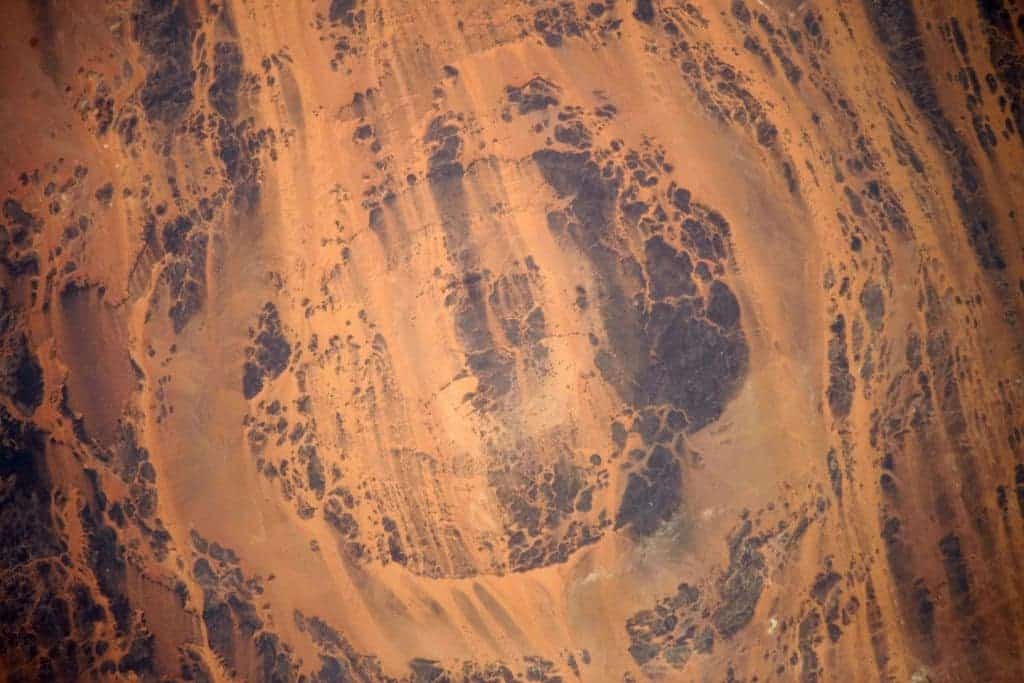
In the arid expanses of Chad in Northern Africa, two asteroid impacts sites, Aorounga and Gweni Fada, bear testimony to a significant event. These craters, approximately 12.6 km and 14 km in diameter respectively, are part of a potential crater chain—suggesting a fragmented asteroid or comet could have created multiple craters. Despite the harsh desert environment, these scars of the past continue to shape the terrain.
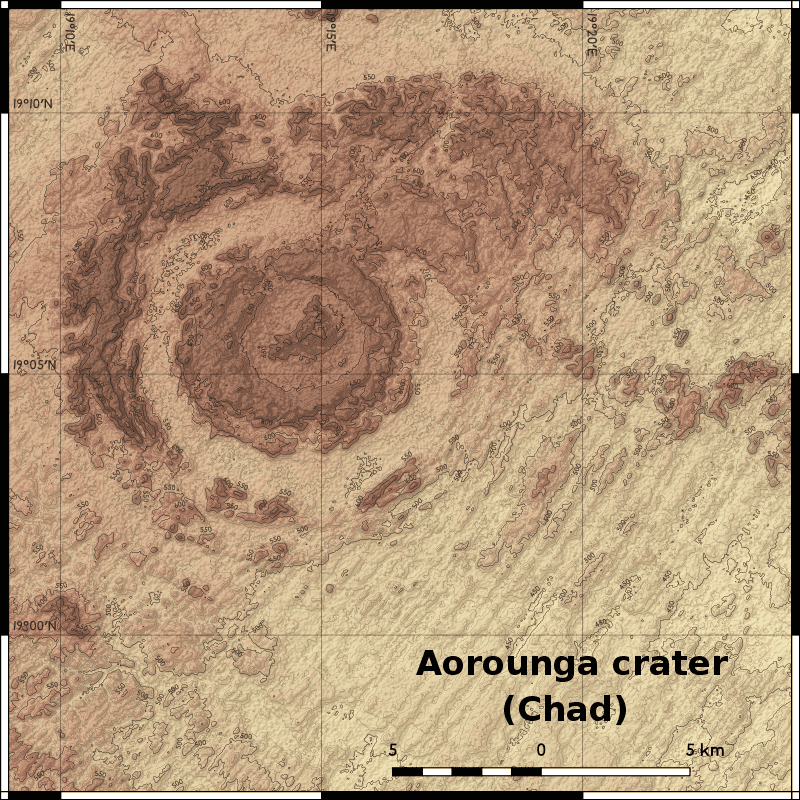
The two previously mentioned rings are set apart by a consistently broad, flat valley. Nestled nearly in the middle of this low-lying area, there's a potential central mound—possibly a structure created by an uplift—that rises to a height of 1.5 km.
Gosses Bluff crater
Australia
Diameter: 24 km
Age: 142 million years
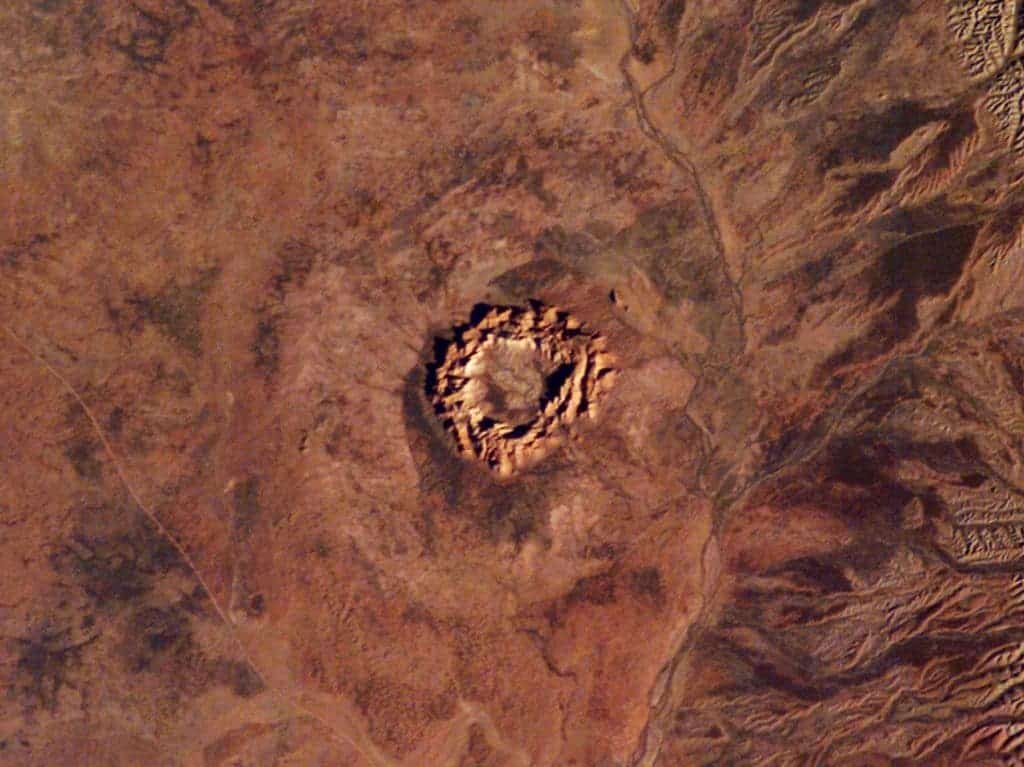
Situated in the heart of Australia's outback, Gosses Bluff, or Tnorala, is a dramatic circular structure formed by a cosmic impact about 142 million years ago. Despite erosion wearing down the original crater, the 5-km central uplift—a mountainous ring formed from the rebounding ground after the asteroid impact—still towers over the surrounding landscape, a vivid testament to the ancient event. In the past the crater has been the target of petroleum exploration.
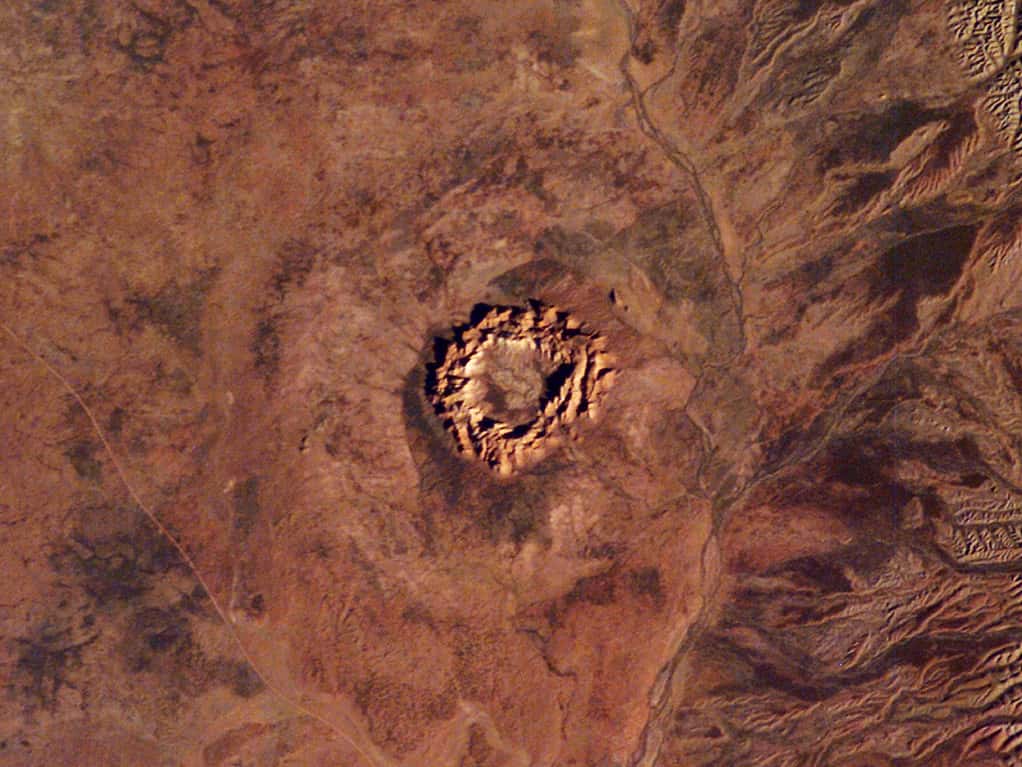
Arizona Crater
Arizona, US
Diameter: 1.2 km
Age: 50,000 years
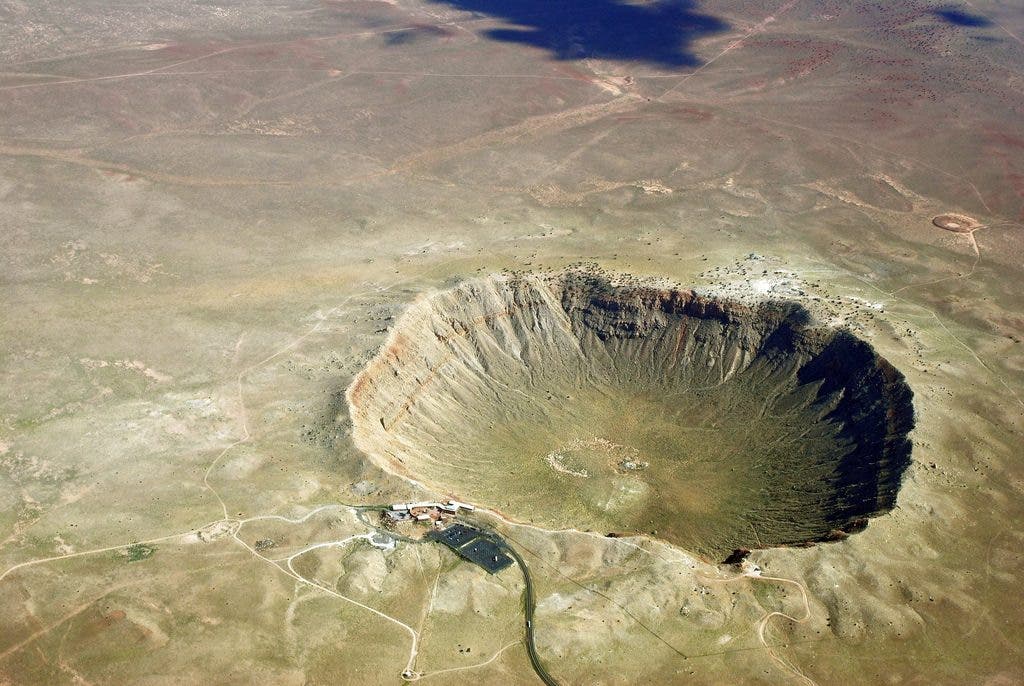
We couldn't possibly have a list of asteroids that hit the Earth and not include Arizona Crater. This impressive crater is also known as Barringer Meteorite Crater and has a diameter of about 1.2 km. The crater is a popular destination for both scientists and tourists alike. Its relatively young age—only about 50,000 years—and the dry climate have helped preserve the crater’s original features, making it a priceless resource for scientists studying impact processes.
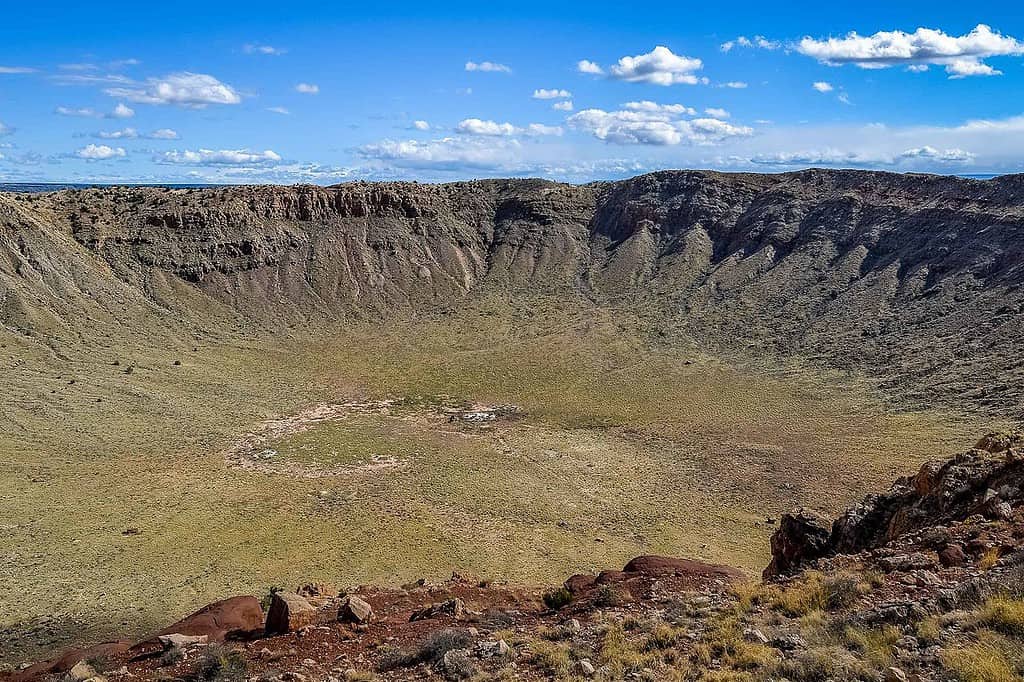
The bad thing is that visiting it costs, but because it is so recent and so remarkaly well preserved, this asteroid impact crater has high scientific and educational value.
Vredefort crater
South Africa
Diameter: 300 km
Age: 2 billion years
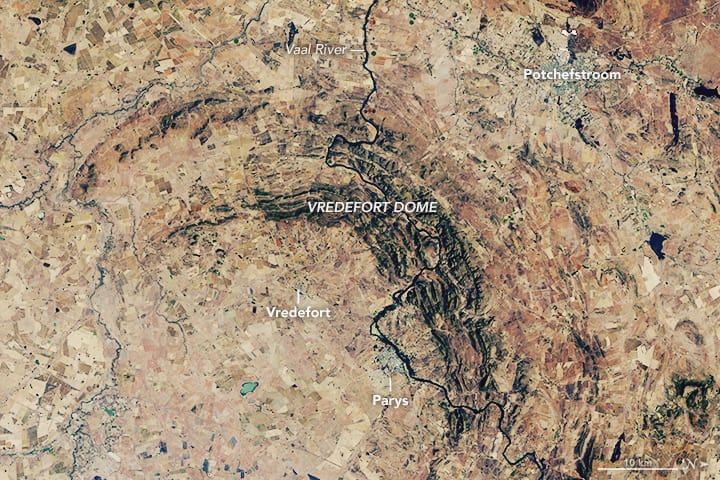
Imprinted on the terrain of South Africa, the Vredefort crater serves as a poignant reminder of a violent cosmic event that unfolded over 2 billion years ago. This ancient battlefield, where Earth and asteroid clashed, is considered the largest verified impact crater on our planet, initially estimated to be a staggering 300 km in diameter.
We're almost lucky that there was not much life on Earth at the time, otherwise this would have been a cataclysmic extinction. For comparison, the Chicxulub crater, which wiped off the dinosaurs
Echoes of the asteroids that hit Earth
Plenty of cataclysmic events have happened on Earth in history. But few things have been as impactful as celestial hits. While the atmosphere protects us somewhat from such impacts, the planet's surface is riddled with hundreds of big scars from impacts. From the icy recesses of Siberia to the vast expanses of the African desert, from the verdant landscapes of Ghana to the arid plains of Arizona, these cosmic remnants reveal a tale of planetary resilience and transformation.
The sheer energy wielded by these celestial visitors is awe-inspiring, capable of changing landscapes and even influencing the course of life on our planet. Yet, it's important to remember that the likelihood of such catastrophic events occurring in our time is extremely low. Instead, these impact sites serve as crucial scientific resources, giving us insights into Earth's distant past, the evolution of our solar system, and the dynamics of larger cosmic phenomena.
Moreover, the study of asteroids and their impact sites underscores the importance of vigilance and preparedness in an ever-changing universe. Efforts like NASA's Planetary Defense Coordination Office's work in detecting and tracking near-Earth objects remind us of the necessity of understanding our celestial neighborhood.
As we stand on these ancient battlegrounds, let's remember the asteroids that hit Earth not just as harbingers of destruction, but as messengers from the cosmos—bringing with them knowledge and sparking curiosity that fuels our relentless journey of discovery. As we look to the stars, we continue to decipher these cosmic narratives, piecing together the incredible story of our Earth and our place in the universe.






